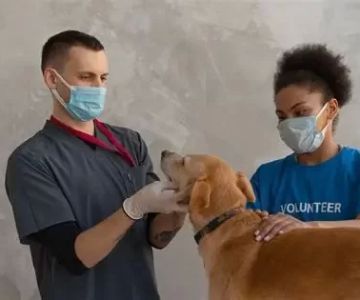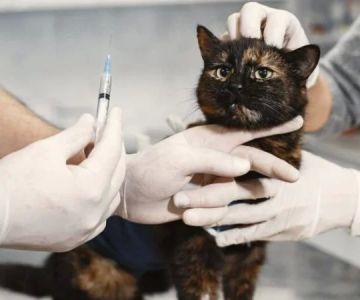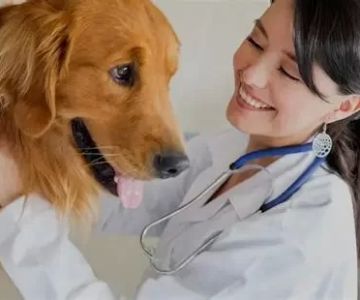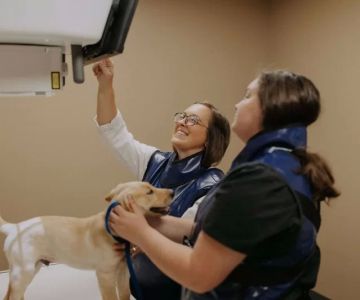How is Chemistry Used in Veterinary Medicine? Explore Its Vital Role in Pet Healthcare
- 1. Introduction to Chemistry in Veterinary Medicine
- 2. Key Applications of Chemistry in Veterinary Medicine
- 3. Real-Life Cases: Chemistry in Action
- 4. Advancements in Veterinary Medicine Through Chemistry
- 5. Conclusion: Embracing Chemistry for Better Pet Health
1. Introduction to Chemistry in Veterinary Medicine
Veterinary medicine is more than just caring for pets and animals; it’s a science where chemistry plays a pivotal role. From diagnosing diseases to formulating medications, chemistry is at the heart of modern veterinary practices. It allows veterinarians to create effective treatments, ensure animal welfare, and understand complex biological processes at a molecular level.
2. Key Applications of Chemistry in Veterinary Medicine
Chemistry is used in various aspects of veterinary medicine. One key area is in the development of pharmaceuticals. Veterinary drugs, whether they are for pain management, infection control, or vaccinations, are designed using chemical knowledge. The ability to understand how chemicals interact with the animal body allows veterinarians to treat a wide range of conditions effectively.
2.1 Drug Formulation
For example, painkillers for animals, such as NSAIDs (non-steroidal anti-inflammatory drugs), are carefully formulated using chemical compounds that target inflammation and pain pathways in animals. By understanding how chemical molecules bind to receptors in the body, veterinarians can ensure that treatments are both safe and effective for different species.

980 E Northwest Hwy, Arlington Heights, IL 60004, USA
See Details2.2 Diagnostic Tools
Chemistry is also essential in veterinary diagnostics. Blood tests, urinalysis, and other diagnostic procedures rely on chemical reactions to identify diseases or imbalances in the animal's system. For instance, glucose levels in a dog’s blood can be measured through chemical reactions that help diagnose diabetes.
2.3 Vaccination Development
The creation of vaccines, which have saved millions of animal lives, is another area where chemistry shines. Vaccines are designed using antigens and adjuvants, which are chemical substances that help provoke the desired immune response in animals, protecting them against diseases like rabies or distemper.
3. Real-Life Cases: Chemistry in Action
Let’s look at a real-life example: a veterinary clinic treating a dog with a severe infection. The veterinarian uses a combination of antibiotics and anti-inflammatory drugs, both of which are developed using chemical principles. By understanding how these drugs work at the molecular level, the veterinarian can precisely treat the infection, reduce inflammation, and speed up recovery. The success of such treatments is directly due to the role of chemistry in veterinary medicine.
3.1 Antibiotic Resistance
Antibiotic resistance is a growing concern in both human and animal medicine. Understanding the chemistry behind bacterial resistance mechanisms allows researchers to develop new antibiotics that are more effective in combating resistant strains. This is a prime example of how chemistry not only helps treat animals but also contributes to addressing global health challenges.
4. Advancements in Veterinary Medicine Through Chemistry
Chemistry continues to drive innovation in veterinary medicine. From more precise drug dosages to the development of gene therapies, new chemical research is constantly improving how veterinarians treat animals. For instance, gene editing techniques like CRISPR, which involve chemical processes at a genetic level, are being explored for their potential to cure genetic disorders in animals, such as inherited blindness in certain dog breeds.
4.1 Personalized Medicine for Animals
Another exciting advancement is personalized medicine, where chemical analysis of an animal’s genetic makeup and environment helps tailor treatments to individual needs. This is similar to precision medicine in humans, but it’s applied to pets and livestock, ensuring that each animal receives the most effective treatment based on its unique biological profile.
5. Conclusion: Embracing Chemistry for Better Pet Health
The integration of chemistry into veterinary medicine has revolutionized how we approach animal health care. From life-saving medications to diagnostic breakthroughs, chemistry has played a fundamental role in improving the lives of countless animals. As science continues to evolve, the possibilities for chemistry’s applications in veterinary medicine are limitless, leading to even more precise treatments, cures, and preventative measures for animals in the future.
Interested in learning more about how chemistry is transforming veterinary care? Explore our collection of resources on veterinary pharmaceuticals and treatments, designed to support veterinarians and pet owners alike. Click here to discover more about these life-saving innovations.










